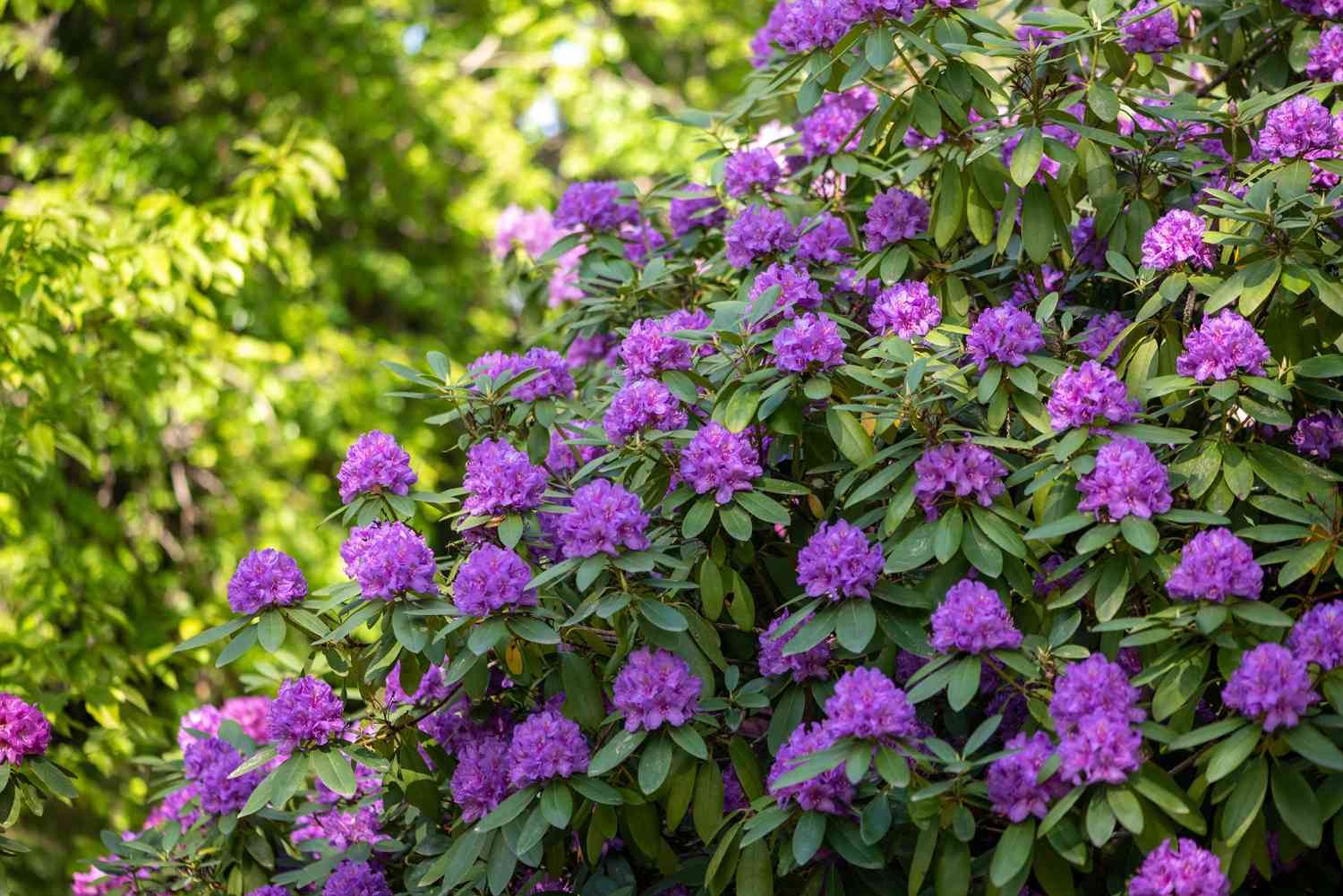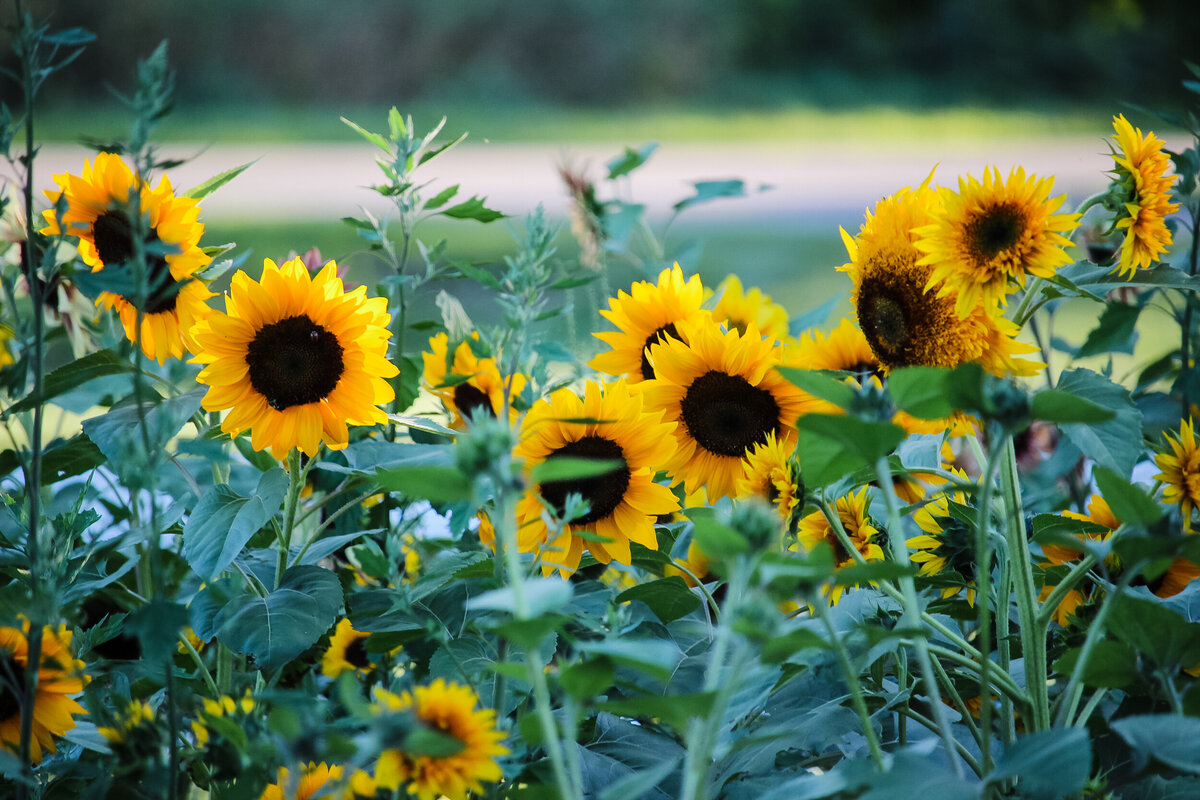Home>Gardening Techniques>Plant Care>What Is The Most Popular Evergreen Shrubs?


Plant Care
What Is The Most Popular Evergreen Shrubs?
Modified: January 22, 2024
Discover the top evergreen shrubs that are easy to care for and perfect for any garden. Learn more about plant care tips and recommendations here.
(Many of the links in this article redirect to a specific reviewed product. Your purchase of these products through affiliate links helps to generate commission for Chicagolandgardening.com, at no extra cost. Learn more)
Table of Contents
Introduction
Welcome to the world of evergreen shrubs! If you’re looking to add some greenery and structure to your garden that will remain vibrant all year round, then evergreen shrubs are the perfect choice. These plants have the incredible ability to retain their leaves or needles throughout the year, offering beauty, privacy, and protection to your outdoor space.
Evergreen shrubs not only enhance the aesthetics of your garden, but they also provide numerous benefits. They act as natural windbreaks, reducing noise and providing a shield against harsh weather conditions. They also offer privacy, acting as a natural barrier to block prying eyes from neighboring properties. Additionally, evergreen shrubs are often low-maintenance, requiring minimal pruning and care.
With so many options available, it can be overwhelming to choose the most popular evergreen shrubs for your garden. In this article, we will explore some of the top choices that are beloved by gardeners around the world.
Boxwood (Buxus)
Boxwood, scientifically known as Buxus, is a classic and widely cherished evergreen shrub. Its distinctive dense foliage and compact growth habit make it a popular choice for formal hedges, topiaries, and borders in gardens.
Boxwood is known for its versatility, as it can thrive in both full sun and partial shade, making it suitable for a variety of growing conditions. It is also known for its excellent tolerance to pruning, which allows for shaping and sculpting into desired forms. Whether you prefer a neatly trimmed hedge or an intricate topiary design, boxwood provides endless possibilities for creative garden designs.
In addition to its aesthetic appeal, boxwood also offers some practical benefits. It serves as a natural privacy screen, blocking unwanted views and creating a sense of seclusion in your garden. Boxwood also has a dense foliage structure that provides shelter for small wildlife, such as birds and beneficial insects. It is also deer-resistant, making it an ideal choice for gardens frequented by these hungry animals.
Boxwood is relatively easy to care for, requiring regular watering during dry spells and occasional fertilization to maintain its lush green color. It is important to note that boxwood is susceptible to some diseases, such as boxwood blight, so proper maintenance and monitoring are essential to keep the shrub healthy.
With its timeless elegance and adaptability, boxwood remains a favored choice among gardeners for creating formal and classic garden designs. Whether used as a standalone specimen or as part of a larger landscape, boxwood adds a touch of sophistication and structure to any outdoor space.
Hollies (Ilex)
Hollies, scientifically known as Ilex, are versatile evergreen shrubs that bring beauty and variety to any garden. With their glossy green leaves and vibrant berries, hollies are known for their visual appeal and ability to attract wildlife.
One of the standout features of holly shrubs is their ability to produce striking berries, typically in shades of red or orange. These berries not only add a pop of color to the garden, but they also serve as a valuable food source for birds during the winter months. The combination of the glossy leaves and vibrant berries creates a stunning display that can be enjoyed year-round.
Hollies come in a range of sizes, from small and compact varieties to tall and majestic ones. This makes them suitable for a variety of purposes, such as hedging, screening, or as standalone focal points in the garden. They can be pruned and shaped to maintain a desired form, making them highly adaptable to different garden styles and designs.
In addition to their ornamental value, hollies are also known for their resilience and ability to thrive in different environmental conditions. They can tolerate shade, drought, and a variety of soil types, making them a reliable choice for gardens with challenging growing conditions. However, it is important to note that some holly species are dioecious, meaning they require both male and female plants to produce berries. Therefore, if you desire a berry-producing holly, ensure that you have both male and female plants in close proximity.
Holly shrubs are relatively low-maintenance, requiring minimal pruning to maintain their shape. They are also known for their resistance to pests and diseases, making them a great option for gardeners who prefer low-intervention plants. Regular watering, especially during dry spells, will help ensure optimal growth and health.
Overall, hollies are an excellent choice for adding visual interest, wildlife attraction, and year-round color to your garden. Whether you opt for a compact variety or a grand holly tree, these evergreen shrubs are sure to be a captivating addition to any landscape.
Yews (Taxus)
Yews, scientifically known as Taxus, are elegant and long-lived evergreen shrubs or small trees that have been revered for centuries for their beauty and symbolism. With their dark green foliage and dense growth habit, yews bring a touch of sophistication and timeless appeal to any garden.
Yews are known for their versatility and can be used in various garden settings. They can be shaped into formal hedges, trimmed into topiaries, or left to grow naturally as standalone specimens. Their dense foliage provides excellent privacy and screening, making them a popular choice for creating boundaries or blocking unsightly views.
One of the standout features of yews is their ability to tolerate heavy pruning and shaping. This makes them ideal for creating intricate and artistic designs in the garden, allowing for the creation of visually striking geometric patterns or unique focal points. With proper pruning and care, yews can retain their shape and beauty for many years.
In addition to their aesthetic appeal, yews are also valued for their longevity. Many yew species are slow-growing and have a long lifespan, with some specimens living for hundreds or even thousands of years. This makes them a wise investment for gardeners looking to create a lasting legacy in their outdoor space.
Yews are also known for their tolerance to different growing conditions. They can thrive in full sun to partial shade and can adapt to various soil types, including poor and compacted soils. However, it is important to note that yews prefer well-draining soil to prevent issues with root rot. Regular watering, especially during dry spells, and occasional fertilization will help maintain the health and vitality of yews.
While generally low-maintenance, yews are susceptible to some diseases, such as the yew blight. Regular monitoring, proper pruning techniques, and good airflow around the plants can help prevent and manage these issues.
In summary, yews are elegant, versatile, and long-lived evergreen shrubs that add timeless beauty to any garden. Whether you prefer a neatly trimmed hedge or an artistic topiary, yews offer endless possibilities for creating stunning designs that will stand the test of time.
Barberry (Berberis)
Barberry, scientifically known as Berberis, is a diverse and vibrant group of evergreen shrubs that offers a wide range of options for gardeners seeking eye-catching foliage and beautiful flowers. With their unique leaf colors and attractive blooms, barberries can bring a burst of color and visual interest to any garden.
One of the standout features of barberry shrubs is their foliage, which comes in a variety of hues including shades of green, yellow, red, and purple. The foliage may have different shapes, from small and rounded to elongated and spiky, adding texture and depth to the overall garden design. This diversity of foliage makes barberries excellent options for creating contrast and adding focal points in the landscape.
In addition to their vibrant leaves, barberries also produce beautiful flowers in spring or early summer. These flowers can range from delicate yellow blossoms to vibrant red or orange clusters, creating a stunning display of color and attracting beneficial pollinators such as bees and butterflies.
Barberries are typically low-maintenance plants, making them a popular choice for gardeners with busy schedules. They are adaptable to a range of soil conditions and can tolerate both sun and partial shade. While they prefer well-drained soil, some species of barberry can also withstand dry conditions once established.
Barberry shrubs are generally resistant to pests and diseases, thanks to their natural defenses, including thorns. However, it is important to keep an eye out for potential issues, such as aphids or powdery mildew, and take appropriate measures to address them promptly.
Barberries can be used in a variety of garden settings, including as low hedges, foundation plantings, or as individual specimens. Their different sizes and growth habits allow for versatility in landscape design, providing options for both small and large gardens.
It is important to note that some species of barberry are classified as invasive in certain regions, so it is essential to check with local authorities or gardening experts to ensure that you choose a non-invasive variety that is suited to your area.
In summary, barberry shrubs are an excellent choice for adding vibrant foliage and colorful flowers to your garden. Their diverse range of colors, low-maintenance nature, and versatility make them a popular option for gardeners seeking both beauty and ease of care.
Privet (Ligustrum)
Privet, scientifically known as Ligustrum, is a popular and versatile evergreen shrub that is widely used for hedging and screening purposes in gardens. With its dense foliage, fast growth rate, and adaptability to different growing conditions, privet is an excellent choice for creating privacy and adding structure to outdoor spaces.
One of the key advantages of privet is its rapid growth, making it an efficient option for achieving quick results in creating hedges or screening barriers. With proper pruning and care, privet can form a dense and impenetrable wall of foliage, providing privacy and acting as a sound barrier. It can withstand frequent trimming and shaping without losing its appeal or health.
Privet shrubs are known for their glossy and leathery leaves, which are typically dark green in color. This evergreen foliage provides year-round visual interest and makes privet an ideal choice for those seeking greenery that remains vibrant during the colder months. In late spring or early summer, privet also produces small, white, and fragrant flowers that attract pollinators such as bees and butterflies.
Privet is highly adaptable and can tolerate a range of soil types, including clay and sandy soils. It prefers full sun to partial shade but can handle shady conditions as well. Additionally, privet is relatively drought-tolerant once established, making it suitable for gardens with less frequent irrigation.
Caring for privet is relatively straightforward. Regular watering during dry spells, especially in the first few years of establishment, will help the shrub thrive. Pruning is important to maintain its desired shape and density. It is worth noting that privet can be invasive in some regions, so it is essential to check with local authorities or gardening experts to ensure that you choose a non-invasive variety for your area.
Privet can be used in various garden settings, from formal hedges and boundary planting to mixed shrub borders. It can also be grown as individual specimens or pruned into topiary shapes to add architectural interest to the garden.
In summary, privet is a versatile and fast-growing evergreen shrub that is commonly used for hedging and screening. Its dense foliage, adaptability, and ease of care make it a popular choice among gardeners who desire privacy, structure, and year-round greenery in their outdoor spaces.
Japanese Pieris (Pieris japonica)
Japanese Pieris, scientifically known as Pieris japonica, is a stunning evergreen shrub that offers beautiful foliage, vibrant flowers, and a graceful presence in the garden. With its elegant form and attractive features, Japanese Pieris is a favorite among gardeners seeking a plant that combines visual appeal with low maintenance requirements.
One of the defining features of Japanese Pieris is its foliage. The leaves emerge as vibrant red or bronze in spring, gradually maturing to a lustrous dark green. The new growth provides a striking contrast against the mature foliage, creating an eye-catching display. Some varieties of Japanese Pieris also showcase variegated or edged leaves, adding an extra layer of interest and uniqueness to the plant.
In addition to its foliage, Japanese Pieris produces clusters of bell-shaped flowers in late winter to early spring. These flowers typically appear in shades of white, pink, or red, creating a beautiful and delicate contrast against the green foliage. The nectar-rich blooms attract pollinators, including butterflies and bees, adding a touch of animation and wildlife interest to the garden.
Japanese Pieris is a relatively low-maintenance shrub, making it a popular choice for both beginner and experienced gardeners. It prefers partial shade to full shade and well-draining soil. It is important to provide regular watering during dry spells, especially during its establishment phase. Mulching around the base of the plant can help retain moisture and suppress weed growth.
Pruning is generally not necessary for Japanese Pieris, as it naturally maintains its compact and rounded form. However, if desired, selective pruning can be done after flowering to shape and encourage new growth. Avoid extensive pruning in late summer or fall, as this may remove next season’s flower buds.
Japanese Pieris is an excellent choice for various garden settings. It can be used as a standalone specimen, in mixed shrub borders, or as a foundation plant. Its slow to moderate growth rate makes it suitable for small to medium-sized gardens, and it can also be grown in containers for patios or balconies.
In summary, Japanese Pieris is a captivating evergreen shrub that offers a combination of stunning foliage and beautiful flowers. Its low-maintenance nature, adaptability to shade, and ornamental value make it a prized addition to gardens seeking elegance, color, and year-round interest.
Euonymus (Euonymus fortunei)
Euonymus, scientifically known as Euonymus fortunei, is a versatile and hardy evergreen shrub that is highly valued for its attractive foliage and ability to thrive in various growing conditions. With its vibrant colors, compact growth habit, and easy maintenance, Euonymus is a popular choice for adding visual interest and year-round beauty to any garden.
One of the standout features of Euonymus is its foliage. The leaves can vary in color, with cultivars showcasing shades of green, yellow, gold, or variegated hues. The combination of different leaf colors and patterns creates a striking and dynamic display in the garden. The foliage typically retains its color throughout the year, ensuring continuous visual appeal even during the colder months.
In addition to its foliage, Euonymus produces small, inconspicuous flowers in the spring, followed by attractive seed capsules or berries in the fall. These berries come in various shades of red, pink, or orange, adding another layer of color and interest to the plant. While the berries may not be long-lasting, they provide a delightful display and may attract birds to the garden.
Euonymus is known for its adaptability, making it suitable for a range of growing conditions. It can tolerate full sun to partial shade, although some varieties may prefer more shade in warmer climates. Euonymus can also tolerate a variety of soil types, including clay, sandy, or loamy soils. Once established, it is generally drought-tolerant and requires minimal water requirements.
Maintenance of Euonymus is relatively straightforward. Regular watering is important during the establishment period, but the plant can generally withstand dry spells once it is fully established. Pruning can be done in late winter or early spring to control size, shape, or to rejuvenate older plants. Euonymus has a dense growth habit, making it ideal for hedging, borders, or as a ground cover.
It is worth mentioning that Euonymus can be susceptible to certain pests, such as scale insects or aphids. Regular monitoring and appropriate measures, such as using insecticidal soaps or natural predators, can help address these issues.
Euonymus is a versatile and visually appealing evergreen shrub that adds color, texture, and year-round interest to any garden. Whether used as a focal point, a mass planting, or a hedge, Euonymus is sure to bring vibrancy and beauty to your outdoor space.
Juniper (Juniperus)
Juniper, scientifically known as Juniperus, is a diverse and resilient evergreen shrub that offers a range of sizes, shapes, and textures. With their unique foliage, hardiness, and adaptability, junipers are widely loved by gardeners for their versatility and ability to thrive in various conditions.
Junipers are characterized by their needle-like foliage, which can range in color from vibrant green to silvery blue or golden yellow, depending on the species and variety. Some junipers also produce scale-like foliage that adds a different texture and depth to the plant. This wide array of foliage colors and textures makes junipers a valuable addition to any garden, providing all-year-round interest and visual appeal.
One of the key advantages of junipers is their ability to survive in challenging conditions. They are highly adaptable to different soil types, including sandy or poor soils, and they can withstand drought, heat, and cold temperatures. This makes them an excellent option for gardens with harsh climates or less fertile soils.
Junipers come in various sizes and growth habits, ranging from low-growing ground covers to tall, upright specimens. This variability in form allows for versatility in garden design. Junipers can be used as foundation plantings, mass plantings, or as focal points in mixed borders. They can also be pruned and shaped to create topiaries or hedges, adding structure and definition to the landscape.
Maintenance of junipers is relatively minimal. Once established, they are generally low-maintenance and require little to no fertilizer. They are also relatively resistant to pests and diseases. However, regular monitoring is still recommended to detect any issues early on. Junipers may benefit from occasional pruning to remove dead or diseased branches and maintain their desired shape.
Junipers are known for their juniper berries, which are produced by female plants. These berries provide a source of food for birds and add additional visual interest to the shrub. It is important to note that not all juniper varieties produce berries, so it is advisable to select a variety that suits your desired aesthetic and functional requirements.
In summary, junipers are versatile and resilient evergreen shrubs that offer a range of foliage colors, textures, and growth habits. Their adaptability, low maintenance needs, and ability to thrive in challenging conditions make them a popular choice for creating structure, adding color, and providing year-round interest in gardens of all sizes and styles.
Mahonia (Mahonia)
Mahonia, scientifically known as Mahonia, is a striking evergreen shrub that adds beauty, texture, and fragrance to gardens. With its unique foliage, vibrant flowers, and hardy nature, Mahonia is a favorite choice among gardeners looking to create a standout feature in their outdoor space.
One of the most distinctive features of Mahonia is its foliage. The leaves are typically leathery and spiky, with a glossy texture that adds a touch of sophistication to the plant. The foliage color can range from deep green to shades of blue-green or even purple-red, providing year-round visual interest. Some Mahonia varieties also exhibit attractive variegation or distinctive leaf shapes, further enhancing their ornamental value.
In addition to their foliage, Mahonia shrubs produce clusters of vibrant and aromatic flowers. The flowers are typically yellow or golden, adding a burst of color to the garden during the winter months when many other plants are dormant. These flowers not only provide a cheerful display but also attract pollinators, such as bees and butterflies, adding life and movement to the garden.
Mahonia is known for its hardiness and ability to thrive in a variety of growing conditions. It can tolerate both full sun and partial shade, making it versatile for different garden settings. Mahonia is also adaptable to different soil types, including clay and loamy soils, and it can withstand variations in moisture levels. Once established, it is generally drought-tolerant, which is a valuable trait for gardens with challenging climates.
Maintenance of Mahonia is relatively straightforward. It requires little to no pruning, as it naturally forms a well-rounded and compact growth habit. However, occasional pruning can be done to remove dead or damaged branches and shape the shrub according to your preferences. Mahonia does benefit from regular watering, especially during dry spells, to maintain its vitality and appearance.
Another notable aspect of Mahonia is its versatility in garden design. It can be used as a standalone focal point, as part of mixed borders, or as a hedge or screening plant. Its unique foliage and compact growth make it a valuable addition to gardens seeking texture, structure, and year-round interest.
In summary, Mahonia is a captivating evergreen shrub that brings beauty, fragrance, and resilience to gardens. With its unique foliage, vibrant flowers, and adaptability, Mahonia is an excellent choice for adding visual interest, color, and a touch of elegance to any outdoor space.
Summary
Evergreen shrubs are a valuable addition to any garden, providing year-round beauty and structure. In this article, we have explored some of the most popular evergreen shrubs, including Boxwood, Hollies, Yews, Barberry, Privet, Japanese Pieris, Euonymus, Juniper, Mahonia, and Mahonia.
Boxwood stands out for its versatility and ability to be shaped into formal hedges or topiaries. Hollies offer vibrant berries and attractive foliage, making them a favorite among wildlife enthusiasts. Yews are known for their longevity, adaptability, and elegant foliage. Barberry provides a burst of color with its vibrant foliage and berries.
Privet is highly regarded for its dense privacy screening capabilities and low-maintenance nature. Japanese Pieris offers beautiful foliage and delicate flowers, perfect for adding elegance to any garden. Euonymus presents an array of foliage colors and patterns, making it a versatile choice for different garden designs. Juniper’s unique foliage, adaptability, and resilience make it a popular option for texture and structure in the landscape.
Mahonia features attractive foliage, vibrant flowers, and a pleasing fragrance, adding beauty and interest to gardens. With their unique qualities and adaptability to various growing conditions, these evergreen shrubs offer an array of possibilities for creating visually stunning and resilient landscapes.
When incorporating these popular evergreen shrubs into your garden, consider factors such as the desired purpose, growth habit, color, and maintenance requirements. Whether you’re looking for a formal hedge, a colorful focal point, a fragrant addition, or a wildlife-friendly shrub, there is a perfect evergreen choice for your garden.
Remember to consider the specific needs of each plant, such as sunlight requirements and potential pest or disease issues, to ensure their optimal growth and health. With proper care and attention, these evergreen shrubs will provide long-lasting beauty, structure, and year-round interest to your outdoor space.










